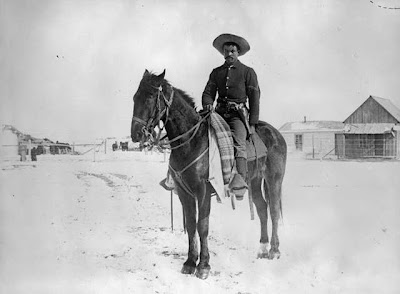 |
Jesse and Frank James, 1872
Jesse (25) and Frank James (29), 1872, Carolinda, Illinois.
U.S. Army Corps of Engineers, photographer not specified or unknown -
U.S. Army Corps of Engineers Digital Visual Library
|
His Early Life:
Jesse Woodson James was born in Clay County, Missouri, USA on September 5, 1847.
He had an older brother, Alexander Franklin James called "Frank", and a younger sister, Susan Lavenia James. His father, Robert S. James, was a farmer and Baptist minister in Kentucky. His mother was Zerelda Elizabeth Cole from Woodford County, Kentucky.
The Civil War Years:
The American Civil War (1861 to 1865) to determine the survival of the Union or independence for the Confederacy of the south. The James brothers were both in the Confederate guerrillas, called the Bushwhackers, in 1863, when Jesse was only 16 years of age, under "Bloody Bill" Anderson's group. This group was accused of participating in atrocities against Union soldiers, including the Centralia Massacre in which Bushwhackers killed or wounded some 22 unarmed Union troops. It was during this time that Jesse James learnt the horse and pistol skills that would make him a legend.
After the war:
Starting in 1868 at the Liberty Bank, Missouri, Jesse and Frank James began robbing banks, stagecoaches and trains, and by 1868 became part of the "James–Younger Gang" with Cole and Jim Younger. An 1869 robbery marked the emergence of Jesse James as the most famous of the former guerrillas and the first time he was publicly labeled an "outlaw," when the Missouri Governor set a reward for his capture. The gang dissolved in 1876, after the capture of the Younger brothers during an attempted robbery of the Northfield First National Bank. Three years later, Jesse James organized a new gang that robbed banks, trains and stagecoaches in Missouri, Kentucky, Iowa, Texas, Arkansas, Kansas, and West Virginia.
His Death:
He was shot in the back of the head on April 3,1882 by one of his own gang members who wanted to collect the reward money.
SOURCES:
Official website for the Family of Jesse James
















